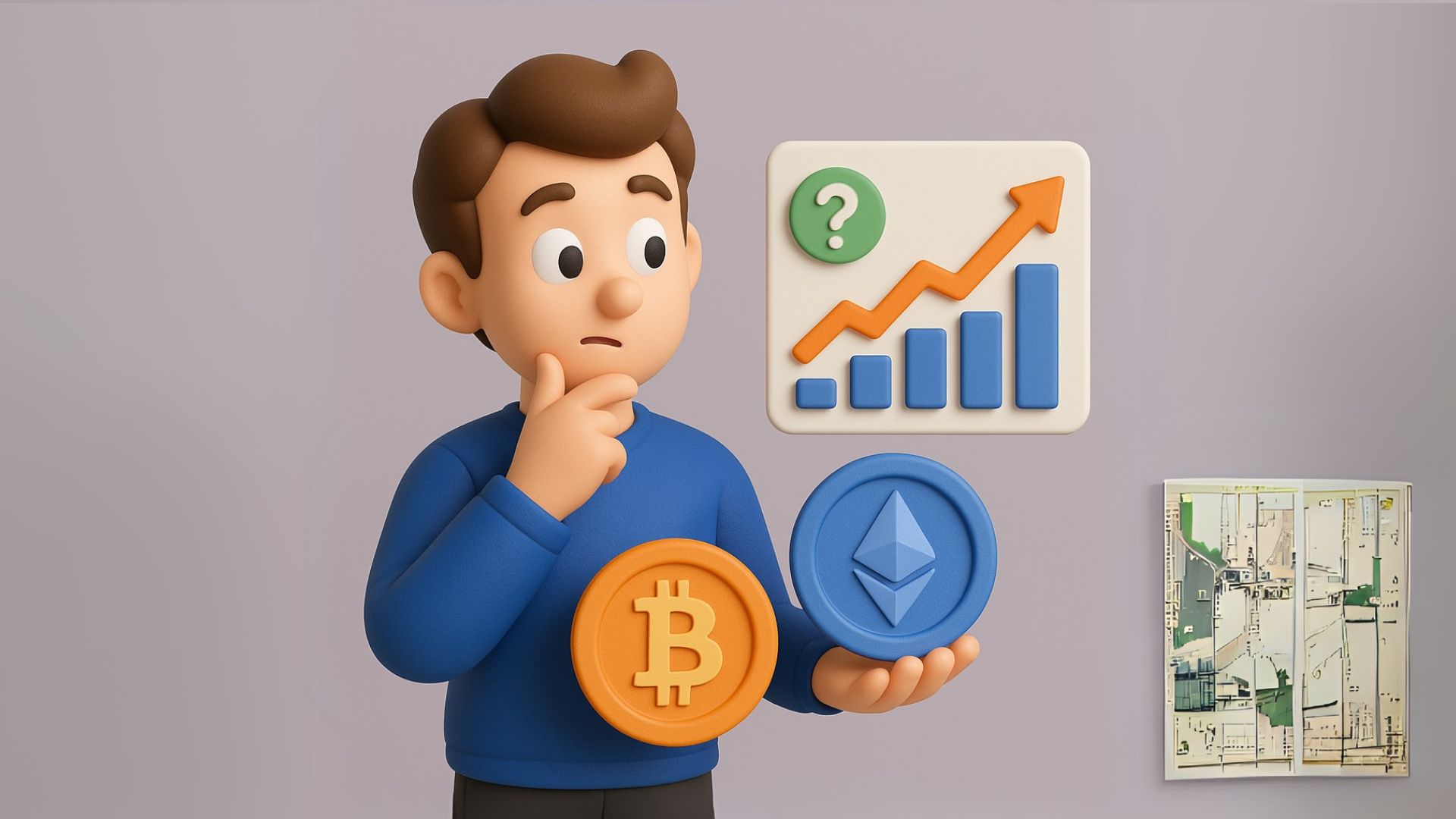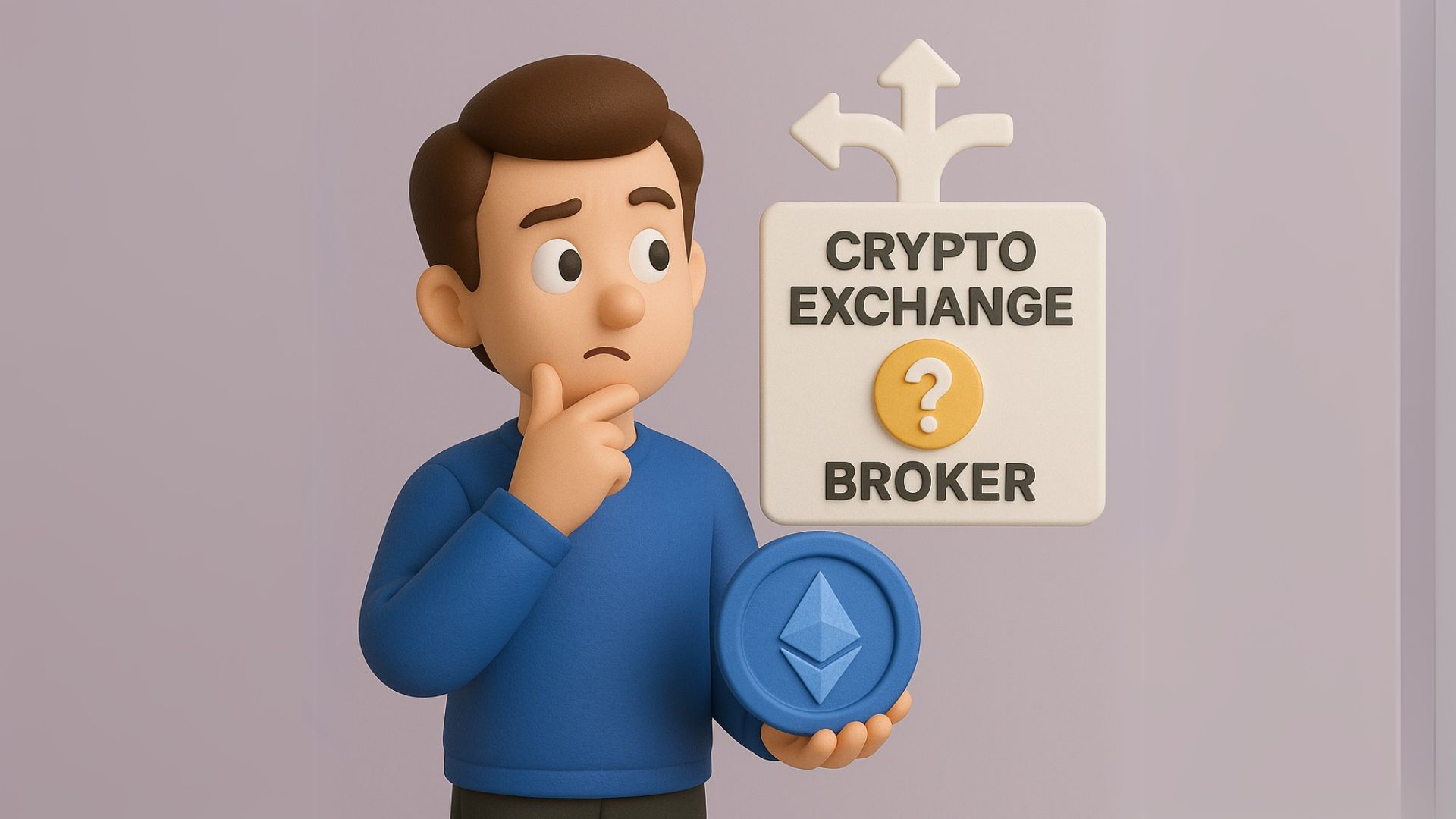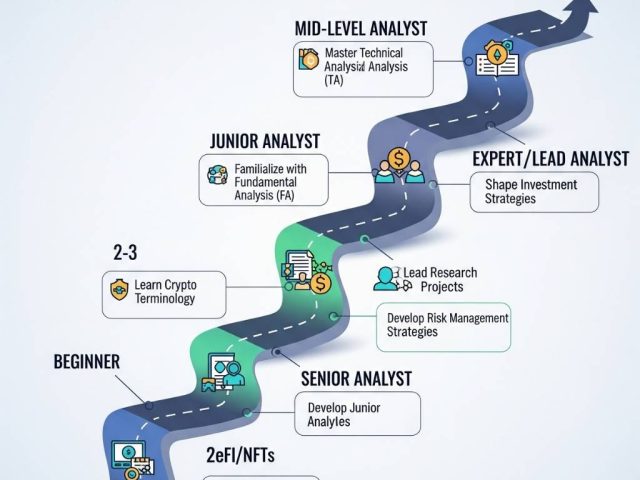Introduction: Unlocking the World of Crypto: Why Buy in 2025?
Cryptocurrencies have emerged as a significant force in the financial landscape, representing digital assets that leverage cryptography for security, transaction verification, and the management of new unit creation . Operating independently of traditional central banks, these digital currencies serve various purposes, acting as a medium of exchange, a store of value, and a vehicle for speculative investment . Unlike traditional currencies issued and backed by governmental authorities, cryptocurrencies operate on decentralized networks . This fundamental difference offers an alternative financial system, potentially addressing limitations associated with conventional finance such as fees, processing times, and accessibility. The core concept of decentralization and independence from traditional financial institutions continues to be a key appeal for many individuals seeking greater control over their finances.
In 2025, the reasons for considering cryptocurrency investment are diverse. Beyond the initial allure of speculative gains, cryptocurrencies present opportunities for portfolio diversification due to their often low correlation with traditional stock and bond markets . Some investors view them as a potential hedge against inflation, similar to gold, owing to the limited supply of many major cryptocurrencies . Furthermore, the cryptocurrency market continues to demonstrate the potential for high long-term upside as adoption increases and the technology matures . Investing in cryptocurrencies also provides access to innovative digital financial systems built on blockchain technology, including decentralized finance (DeFi) and the burgeoning world of Web 3.0 applications . The increasing interest from institutional investors and a potentially clearer regulatory environment in 2025 could further legitimize the cryptocurrency market, making it a more appealing asset class for newcomers. The new year also anticipates the possibility of spot cryptocurrency Exchange Traded Funds (ETFs) for assets like Solana and XRP, which could attract a new wave of investment and simplify access through traditional investment channels .
Step 1: Demystifying Cryptocurrency: Understanding the Basics for Beginners

At the heart of cryptocurrencies lies blockchain technology. This foundational technology can be described as a decentralized, transparent, and secure ledger system . In essence, it’s a shared database where every participant on the network holds a copy of all transactions. Each new transaction is verified and added to a “block,” which is then linked to the previous block using cryptography, forming a chronological chain . This structure ensures that the ledger is tamper-proof and transparent, as any attempt to alter past records would require changing the entire chain across all network participants. This distributed and cryptographic nature makes blockchain inherently more resistant to single points of failure or manipulation compared to centralized systems.
Beyond the basic function as digital currencies, the underlying blockchain technology has enabled the development of a wide range of applications. Two key concepts that beginners should be aware of are decentralized finance (DeFi) and non-fungible tokens (NFTs) . DeFi refers to financial applications built on blockchain networks that aim to recreate traditional financial services in a decentralized manner, such as lending, borrowing, and trading, without the need for intermediaries like banks . Non-fungible tokens (NFTs) are unique digital assets that represent ownership of a specific item or piece of content, such as art, music, or collectibles . Understanding these emerging use cases helps beginners appreciate the broader potential of cryptocurrencies and blockchain technology beyond just digital currencies, showcasing the potential for innovation and new digital economies. Ethereum has emerged as a leading blockchain platform supporting a vast ecosystem of decentralized applications and digital assets, including DeFi and NFTs .
Step 2: Navigating the Crypto Landscape: Choosing the Right Cryptocurrency to Start With in 2025

For individuals new to the cryptocurrency market in 2025, it is generally advisable to begin by focusing on well-established cryptocurrencies with significant market capitalization. These tend to exhibit greater stability and liquidity compared to newer or lesser-known altcoins.
Bitcoin (BTC), as the original cryptocurrency launched in 2009, remains the most popular and widely recognized digital asset . Often referred to as “digital gold,” Bitcoin is frequently viewed as a store of value and a hedge against traditional market uncertainties . Its limited supply and established history contribute to its prominence in the market . Many experts suggest that Bitcoin should constitute a significant portion of a beginner’s cryptocurrency portfolio .
Ethereum (ETH) is another leading cryptocurrency, distinguished by its capability to support smart contracts and decentralized applications (dApps) . It serves as the foundation for a vast ecosystem of DeFi protocols and NFTs, making it a crucial player in the Web3 space . While Ethereum can experience higher transaction fees (often referred to as “gas”), its fundamental role in the decentralized internet makes it a compelling option for many beginners .
Solana (SOL) has gained significant traction for its high transaction speeds and low costs, positioning itself as a scalable alternative for developers and investors . Its rapidly growing ecosystem of decentralized applications makes it an interesting prospect for those looking beyond Bitcoin and Ethereum . The potential for a spot Solana ETF in 2025 could also increase its accessibility .
XRP (XRP) is a cryptocurrency created to facilitate faster and more efficient international money transfers . It powers RippleNet, a payment system used by financial institutions for cross-border transactions . While it has faced regulatory scrutiny in the past, its focus on institutional use cases makes it a noteworthy cryptocurrency .
Binance Coin (BNB) is the native cryptocurrency of the Binance exchange, one of the world’s largest cryptocurrency trading platforms . BNB has various utilities within the Binance ecosystem, including paying for trading fees and powering the Binance Smart Chain . Its value is closely tied to the success and growth of the Binance platform .
Tether (USDT) is a stablecoin, meaning its value is pegged to a fiat currency, in this case, the U.S. dollar . Stablecoins like Tether aim to provide price stability within the volatile cryptocurrency market, making them a less risky entry point for beginners to understand digital assets . They are often used by traders to move funds between exchanges quickly and to preserve capital during periods of market uncertainty .
Beyond these prominent cryptocurrencies, the market includes a vast array of other digital assets known as altcoins . While some altcoins may offer the potential for higher returns, they also typically carry greater risks due to lower liquidity and increased volatility . Beginners should exercise caution and conduct thorough research before investing in any cryptocurrency, especially those outside the most well-known ones . Understanding the specific use case, technology, and potential risks associated with each cryptocurrency is crucial for making informed investment decisions.
Table 1: Popular Cryptocurrencies for Beginners in 2025
| Cryptocurrency Name | Brief Description | Key Features/Use Cases | Considerations for Beginners |
|---|---|---|---|
| Bitcoin (BTC) | The original cryptocurrency, often seen as a store of value. | Store of value, digital gold. | Higher price per coin, but widely recognized and established. |
| Ethereum (ETH) | Platform for smart contracts, DeFi, and NFTs. | Powering decentralized applications, DeFi lending/borrowing, NFT marketplaces. | Important for accessing DeFi and NFTs, potential for transaction fees (gas). |
| Solana (SOL) | Known for fast transactions and scalability. | Fast and low-cost transactions, growing ecosystem for dApps. | Relatively newer but growing rapidly, can be more volatile. |
| XRP (XRP) | A cryptocurrency focused on facilitating international payments. | Facilitating fast and efficient international money transfers. | Focus on institutional use, has faced regulatory scrutiny in the past. |
| Binance Coin (BNB) | The native cryptocurrency of the Binance exchange, used for various utilities. | Paying fees on Binance, accessing Binance Smart Chain, various other utilities. | Primarily useful within the Binance ecosystem. |
| Tether (USDT) | A stablecoin pegged to the US dollar, aiming for price stability. | Providing stability in the crypto market, facilitating trading between other cryptocurrencies. | Designed to maintain a stable value, lower risk but also lower potential for high returns. |
Export to Sheets
Step 3: Finding Your Gateway: Selecting a Secure and Beginner-Friendly Cryptocurrency Exchange or Broker in 2025

To buy and sell cryptocurrencies, beginners need to choose a platform, which can be either a cryptocurrency exchange or a broker . Cryptocurrency exchanges are digital marketplaces that facilitate direct trading between buyers and sellers. They typically offer a wider range of trading pairs and lower fees, with prices determined by supply and demand. Examples of popular exchanges include Coinbase, Binance, and Kraken . Brokers, on the other hand, act as intermediaries. They set their own prices and often provide a simpler, more user-friendly interface, which can be attractive to newcomers. However, brokers may have higher fees and a limited selection of cryptocurrencies .
For beginners in 2025, several reputable cryptocurrency exchanges stand out due to their ease of use, security features, and educational resources. Coinbase is frequently recommended as one of the best platforms for beginners . It boasts a sleek and intuitive user interface, robust security measures including two-factor authentication and cold storage, and a reasonable fee structure that is easy to understand . Coinbase also provides comprehensive educational resources to help beginners learn about cryptocurrency trading . Other popular exchanges that beginners might consider include Kraken, known for its low fees and strong security protocols , and Binance (or Binance US for US residents), which offers a wide variety of cryptocurrencies and trading options . Gemini is often highlighted for its strong security standards and commitment to compliance, making it another reliable choice .
Decentralized exchanges (DEXs) like Uniswap and PancakeSwap operate without a central authority, relying on blockchain technology and smart contracts to facilitate trades . While DEXs offer benefits such as greater privacy and control over funds, they typically have more complex interfaces and require a deeper understanding of blockchain mechanics . They may also involve transaction fees known as “gas fees,” particularly on the Ethereum network . Due to their complexity, DEXs are generally not recommended for beginners who are still learning the fundamentals of cryptocurrency trading and security.
When selecting a cryptocurrency exchange or broker, beginners should prioritize research and comparison based on several key factors . Fees for trading, deposits, and withdrawals can vary significantly between platforms, so it’s important to understand the cost structure. Security is paramount, and beginners should look for platforms with features like two-factor authentication, cold storage of funds, and a history of secure operations. The range of supported cryptocurrencies should also be considered to ensure the platform offers the specific digital assets the beginner is interested in buying. Finally, the user experience and ease of use of the platform are critical, especially for first-time buyers. A platform with an intuitive interface and readily available customer support can make the process much smoother and less intimidating.
Step 4: Setting Up Your Digital Footprint: Creating and Securing Your Trading Account (Including KYC in 2025)
Once a beginner has chosen a cryptocurrency exchange or broker, the next step is to create a trading account. This process typically begins with filling out an online registration form, which usually requires providing personal details such as name, email address, and creating a password . After submitting the initial form, the user will likely need to verify their email address by clicking on a confirmation link sent to their provided email .
Following email verification, most reputable cryptocurrency platforms will initiate a Know Your Customer (KYC) process . This is a standard procedure in the financial industry and is implemented to comply with regulations aimed at preventing fraud, money laundering, and other illicit activities . The KYC process typically requires users to provide additional personal information, such as their full name, date of birth, residential address, and to upload an official identification document, such as a passport, driver’s license, or national ID card . Some platforms may also require a selfie for verification purposes . Beginners should understand that KYC is a standard and necessary procedure on most reputable cryptocurrency exchanges. While it might seem intrusive, it is a sign of a regulated and trustworthy exchange committed to security and legal compliance.
From the outset, it is crucial for beginners to prioritize the security of their trading account. This involves using strong, unique passwords for their exchange account and email address . A strong password should be long, complex, and not easily guessable, ideally containing a mix of uppercase and lowercase letters, numbers, and symbols . Importantly, the password used for the cryptocurrency exchange should be unique and not reused from other online accounts . Additionally, beginners should enable two-factor authentication (2FA) on their exchange account as soon as possible . 2FA adds an extra layer of security by requiring a second verification step, typically a code generated by an app on the user’s smartphone (like Google Authenticator or Authy) or sent via SMS, in addition to the password when logging in or making withdrawals . This makes it significantly harder for unauthorized individuals to access the account, even if they somehow obtain the password. Some platforms may also offer additional security features like PIN codes for transactions .
Step 5: Fueling Your Crypto Journey: Depositing Funds into Your Account (Payment Methods in 2025)
Once the trading account is set up and secured, the next step is to deposit funds to use for buying cryptocurrency. Cryptocurrency exchanges and brokers typically offer several methods for depositing fiat currency (traditional government-issued money like USD or EUR) . One common method is through bank transfers, where the exchange provides its bank account details, and the user initiates a transfer from their own bank account . This method often has lower fees but might take a few business days for the funds to become available . Many platforms also accept credit and debit cards for deposits, which are usually faster but may come with higher transaction fees . Some exchanges also support deposits via online payment processors like PayPal . The availability of specific payment methods can vary depending on the platform and the user’s geographic location .
In addition to depositing fiat currency, some users may choose to deposit cryptocurrency they already own from an external wallet into their exchange account . This process involves generating a unique wallet address for the specific cryptocurrency within the exchange account and then sending the funds from the external wallet to this address .
Beginners should be aware that different deposit methods can have varying fees and processing times . For example, credit card deposits often incur higher fees compared to bank transfers . It is advisable for beginners to check the fee structure of their chosen platform for each deposit method before making a transaction to understand the costs involved . Choosing the most cost-effective and convenient option for their needs is an important part of managing their initial investment.
Step 6: Making Your First Move: Placing an Order to Buy Cryptocurrency (Understanding Order Types for Beginners)
With funds deposited into the account, beginners are now ready to place their first order to buy cryptocurrency. Cryptocurrency exchanges offer various order types that allow users to specify how they want their trades to be executed . For beginners, understanding the basic order types is essential.
A market order is the simplest type. It is an order to buy cryptocurrency at the current market price, and it is usually executed almost immediately . This type of order is convenient for beginners who want to buy quickly without specifying a particular price. However, in a volatile market, the actual execution price might be slightly different from the price displayed when the order was placed .
A limit order allows the buyer to set a specific price at which they want to purchase the cryptocurrency . The order will only be executed if the market price reaches or falls below the specified limit price. This gives beginners more control over the price they pay for their cryptocurrency. For example, if a beginner wants to buy Bitcoin but believes the current price is too high, they can set a limit order to buy at a lower price, and the order will only be filled if Bitcoin’s price drops to that level .
A stop order is another type that beginners might encounter. A stop order to buy is an order to purchase cryptocurrency once its price reaches a specified “stop price” . Once the stop price is reached, the stop order becomes a market order and is executed at the next available price. This type of order can be used to enter a trade once the price breaks a certain resistance level, for example .
While there are other more complex order types available on many exchanges, beginners should focus on understanding market and limit orders as these are the most fundamental and commonly used for basic cryptocurrency purchases . Mastering these basic order types will provide beginners with the necessary tools to execute their initial cryptocurrency trades effectively.
Step 7: Protecting Your Digital Assets: Essential Security Best Practices for Cryptocurrency Beginners in 2025
Given the decentralized nature of cryptocurrencies, users bear the primary responsibility for safeguarding their digital assets . Unlike traditional bank accounts, cryptocurrency holdings are not insured by the FDIC, meaning that if an exchange is hacked or a user’s account is compromised, the funds are often irrecoverable . Therefore, adopting robust security practices from the outset is crucial for beginners .
One of the most important aspects of cryptocurrency security is understanding the use of cryptocurrency wallets . A crypto wallet is a tool for managing and securely storing digital assets . There are two main types of wallets: hot wallets and cold wallets . Hot wallets are software-based and are connected to the internet, making them convenient for frequent trading but also more susceptible to online attacks . Examples of hot wallets include mobile apps, desktop software, and browser extensions . Cold wallets, on the other hand, are hardware or paper-based and store the private keys offline, offering superior security for long-term storage as they are not constantly exposed to the internet . Hardware wallets are physical devices that store private keys securely offline, while paper wallets involve printing the public and private keys on a piece of paper . For beginners who plan to hold a significant amount of cryptocurrency, especially for the long term, using a cold wallet is highly recommended .
In addition to choosing the right type of wallet, beginners should adhere to several essential security best practices :
- Use strong, unique passwords and enable 2FA: As discussed in Step 4, these are fundamental security measures for both the exchange account and cryptocurrency wallets .
- Be wary of phishing scams and fake websites: Phishing attacks are common in the crypto space, where scammers attempt to trick users into revealing their login credentials or private keys through deceptive emails, websites, or messages . Beginners should always double-check URLs and be cautious of clicking on links from unverified sources.
- Store seed phrases securely offline: The seed phrase (or recovery phrase) is a set of words that allows users to recover their cryptocurrency wallet if they lose access to it . This phrase should be written down accurately and stored in a secure offline location, never digitally or shared with anyone. Consider using a metal card for added protection against physical damage .
- Keep software updated: Regularly updating all software related to cryptocurrency activities, including the operating system, antivirus software, and wallet applications, is crucial as updates often include security patches that address known vulnerabilities .
- Avoid public Wi-Fi for crypto transactions: Public Wi-Fi networks are often less secure and can expose users to potential eavesdropping . Beginners should avoid accessing their cryptocurrency accounts or performing transactions on unsecured public networks. Using a VPN can add a layer of security if public Wi-Fi must be used.
Step 8: Managing Your Crypto: Withdrawing and Keeping Your Assets Safe
Once a beginner has purchased cryptocurrency, they might want to withdraw it from the exchange to their personal wallet for safer long-term storage. The process of withdrawing cryptocurrency from an exchange typically involves navigating to the “Withdraw” or “Send” section of the exchange platform . The user will need to specify the amount of cryptocurrency they wish to withdraw and provide the recipient wallet address . This is the public address of their external cryptocurrency wallet where they want to receive the funds.
It is absolutely critical to verify the recipient wallet address very carefully before initiating the withdrawal . Cryptocurrency transactions are irreversible, and sending funds to the wrong address, even by a single incorrect character, will likely result in the permanent loss of those funds . Beginners should double-check the address and ensure it is for the correct cryptocurrency they are withdrawing, as sending a particular cryptocurrency to an incompatible wallet address can also lead to loss of funds . Many wallets offer the option to copy and paste the address or use a QR code scanner to minimize the risk of errors.
While keeping cryptocurrency on an exchange might be convenient for those who are actively trading, it also means entrusting the security of those assets to the exchange . Exchanges, despite their security measures, are still potential targets for hackers. For cryptocurrency that is not being actively traded, withdrawing it to a personal wallet significantly reduces the risk of loss due to an exchange hack or failure. Beginners should understand this trade-off between convenience and security when deciding where to store their cryptocurrency.
Step 9: Staying Informed: Understanding Cryptocurrency Regulations and Their Impact on Beginners in 2025
The regulatory landscape for cryptocurrency is continuously evolving globally, and 2025 is expected to bring further developments . In the United States, as of early 2025, there is no single, comprehensive federal regulatory framework for cryptocurrencies . However, significant legislative efforts are underway, such as the Financial Innovation and Technology for the 21st Century Act (FIT21), which was passed by the House of Representatives in 2024 and is awaiting further action . This indicates a potential future direction for clearer regulation.
Recent developments in early 2025 suggest a possible shift towards a more “light-touch” regulatory approach in the U.S., with the Trump administration signaling support for the digital asset industry . An executive order issued in January 2025 aimed at providing regulatory clarity and certainty . The Securities and Exchange Commission (SEC) also closed some investigations and indicated a revised view on certain types of crypto assets . However, enforcement actions still occur, as demonstrated by the guilty plea of a major crypto exchange for operating an unlicensed money transmitting business .
Globally, there is a growing trend towards regulators focusing on consumer protection, anti-money laundering (AML), and combating the financing of terrorism (CFT) . This often translates to stricter Know Your Customer (KYC) requirements for exchanges and wallets. In the U.S., the FDIC clarified in early 2025 that FDIC-supervised institutions can engage in permissible crypto-related activities without prior approval, indicating a gradual integration of cryptocurrency within the traditional financial system .
For beginners in 2025, one of the most relevant regulatory developments is the new tax reporting requirement for cryptocurrency brokers in the U.S. Starting in 2025, brokers like Coinbase are required to report the gross proceeds from crypto sales and exchanges to the IRS on a new tax form called the 1099-DA . Beginning in 2026, these brokers will also be required to report the cost basis, which will further simplify the process of calculating capital gains or losses for tax purposes . Beginners should be aware that cryptocurrency transactions are generally taxable, and it is essential to keep accurate records of all trades for tax reporting purposes .
Step 10: Looking Ahead: Emerging Trends and New Ways to Buy Cryptocurrency in 2025
The cryptocurrency market is characterized by rapid innovation, and 2025 is expected to see the continuation of several emerging trends that could impact how beginners buy and interact with digital assets.
One significant trend is the increasing focus on user experience (UX) improvements on cryptocurrency exchanges . Platforms are recognizing the need to attract a broader audience, including beginners, and are implementing simpler onboarding processes, more intuitive dashboards, and guided experiences to make buying and trading cryptocurrency less intimidating . Mobile-first design is also becoming a priority, with exchanges developing feature-rich native mobile applications to cater to the growing number of users who prefer to manage their investments on their smartphones .
Another notable trend is the potential for the introduction of more cryptocurrency ETFs . Following the approval of spot Bitcoin ETFs in early 2025, there is anticipation that similar investment vehicles could be launched for other major cryptocurrencies like Solana and XRP . These ETFs would allow investors to gain exposure to these digital assets through traditional brokerage accounts, potentially simplifying the buying process for beginners who are already familiar with ETFs.
While still in their early stages, trends like zero-fee and gasless transactions are gaining traction . Some exchanges and blockchain platforms are exploring ways to reduce or eliminate transaction fees, which could significantly lower the barrier to entry for beginners who might be concerned about the costs associated with buying and selling cryptocurrency .
Other emerging trends include the tokenization of real-world assets, which could eventually allow beginners to invest in fractional ownership of assets like real estate or art using cryptocurrency . The integration of Artificial Intelligence (AI) in trading platforms could also lead to more user-friendly tools and features in the future . While these advanced trends might not directly impact beginners immediately, they highlight the ongoing innovation within the crypto space that could eventually lead to even more accessible and user-friendly ways to buy and manage cryptocurrency.
Conclusion: Important Considerations and Disclaimers for Beginners Entering the Cryptocurrency Market
In summary, buying cryptocurrency in 2025 involves several key steps: understanding the basics of cryptocurrency and blockchain technology, choosing a cryptocurrency to invest in, selecting a secure and beginner-friendly exchange or broker, creating and securing an account, depositing funds, placing an order, protecting your digital assets using secure wallets and best practices, understanding the process of withdrawing cryptocurrency, staying informed about evolving regulations and tax implications, and being aware of emerging trends that could shape the future of cryptocurrency investing.
It is crucial for beginners to approach the cryptocurrency market with a clear understanding of the inherent risks involved . The cryptocurrency market is known for its volatility, with prices capable of experiencing significant and rapid fluctuations. There is a real potential for financial loss, and beginners should only invest funds they can afford to lose. Additionally, the cryptocurrency space is subject to the risk of scams and hacks, making it essential to prioritize security and due diligence.
Beginners are strongly advised to do their own research (DYOR) before investing in any cryptocurrency . This guide provides a starting point, but individuals should seek out additional information and understand the specific risks and potential rewards associated with each cryptocurrency they consider. Staying informed about market trends, news, and regulatory developments is also essential for navigating the cryptocurrency landscape successfully.
Disclaimer: This blog post is intended for informational purposes only and does not constitute financial or investment advice. The cryptocurrency market is highly speculative, and you could lose all of your invested money. Please consult with a qualified financial advisor before making any investment decisions.





